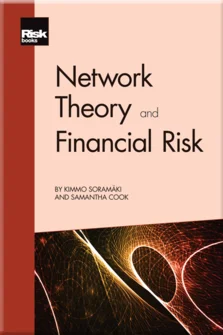Introduction to Financial Networks
Introduction to Financial Networks
Creating and Describing Networks
Identifying Important Nodes: Centrality Metrics
Uncovering Latent Structure: Clustering and Community Detection
Finding Hidden Links: Projection Networks
Fast Insights: Visualising Networks
Financial Cartography: Network Layouts
Brass Tacks: Complexity Reduction
Market Risk: Asset Correlation Networks
Liquidity and Operational Risk: Interbank Payment Networks
Counterparty and Systemic Risk: Exposure Networks
Financial networks are all around us. We are part of them when we make payments, borrow money or invest in financial markets. The actions that we take affect not only our own risks and rewards, but also those of our direct counterparts and of everyone who is part of the same network of interactions. Understanding how these networks function as complex adaptive systems enables us to make better investment and risk management decisions, and also allows us to protect these systems from collapse.
We are living in a time of ever-increasing connectivity and complexity in financial markets and in the financial system overall. This complexity and connectivity is being tackled, for example, by regulators who collect ever more detailed information on the links between financial institutions for macroprudential supervision; by asset managers who need to understand the complex time-varying dynamics of interdependencies in financial markets; and by risk managers who want to understand how emerging systemic risks can be identified as they cascade through the financial system. Applications of network theory are quickly becoming increasingly present in finance, with network analysis providing
Copyright Infopro Digital Limited. All rights reserved.
As outlined in our terms and conditions, https://www.infopro-digital.com/terms-and-conditions/subscriptions/ (point 2.4), printing is limited to a single copy.
If you would like to purchase additional rights please email info@risk.net
Copyright Infopro Digital Limited. All rights reserved.
You may share this content using our article tools. As outlined in our terms and conditions, https://www.infopro-digital.com/terms-and-conditions/subscriptions/ (clause 2.4), an Authorised User may only make one copy of the materials for their own personal use. You must also comply with the restrictions in clause 2.5.
If you would like to purchase additional rights please email info@risk.net











